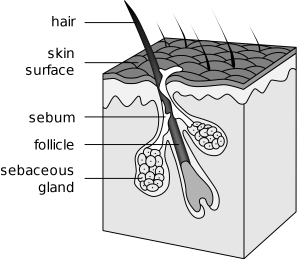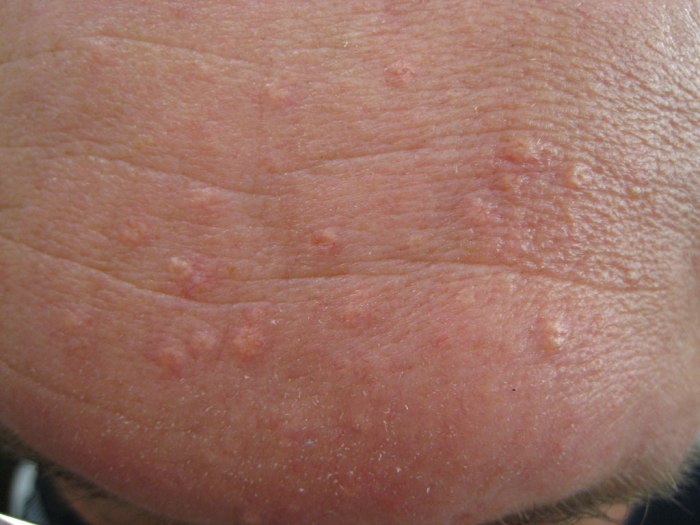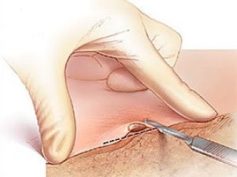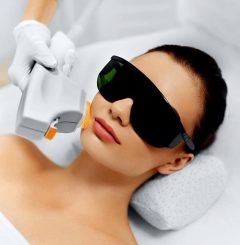WHAT ARE THOSE UNSIGHTLY YELLOW BUMPS ON MY FACE?
Written by Sara Wilchowski, MS, PA-C
Edited by Paul M. Graham, DO
https://dimensionaldermatology.com
Sebaceous hyperplasia is a very common benign condition of our sebaceous (oil) glands. These glands are more prevalent on the face and chest but can be found anywhere on the body with the exception of the palms and soles of the feet. They do not require treatment as there is no known risk for malignant transformation, however, they are cosmetically concerning for many people. There is one caveat, these can mimic basal cell carcinomas, so it is very important to have them thoroughly checked by someone with extensive training in dermatology.
WHAT IS IT?

*TREATMENTS OPTIONS VARY AND ARE SOLELY FOR COSMETIC PURPOSES.
 TOPICAL CREAMS
TOPICAL CREAMS
Retinoids, a topical metabolite of vitamin A, can help decrease the appearance of these skin lesions, but it is important to note that it will take time to notice the improvement. Common names of medications include Retin-A, Differin gel, Refissa, and tretinoin. These creams for many are not well tolerated and contribute to dryness and irritation with use. An alternative to the strong prescription retinoids is the use of a product called AlphaRET by Skin Better Sciences, which is often more tolerable.
 ELECTRODESICCATION
ELECTRODESICCATION
This is a procedure that utilizes an electrical current to destroy the skin lesions. This procedure runs the risk of leaving small scars if the treatment is too aggressive. The skin lesions typically heal within 5 days.
CHEMICAL PEELS
There are many different types of chemical peels that can, over a series of treatments, shrink the appearance of these skin lesions. I believe a 20-30% trichloroacetic acid peel is best, however, 30-70% glycolic acid can also be helpful. There is an added benefit to doing peels to the entire face as it can also help with skin texture, fine lines, wrinkles and overall complexion of the skin, so you get more bang for your buck with this treatment.
 SHAVE REMOVAL
SHAVE REMOVAL
This is a simple technique that allows for the removal of the lesion as a whole by using a flat razor blade to lightly shave the lesion off the skin surface. Like electrocautery, this has the potential to leave a small scar and healing time may take up to 1-2 weeks.
 LASERS
LASERS
This includes photodynamic therapy, otherwise known as PDT, which involves pretreatment with a topical medication called aminolevulinic acid and the use of a specific wavelength of light to target the sebaceous (oil) gland. The 1720nm laser wavelength has been shown to preferentially target and destroy the sebaceous (oil) gland.(2) This option is a newer technique being utilized for research purposes but has demonstrated improvement when there are numerous lesions to be treated.
References:
- Bisaccia, Emil, and Dwight A. Scarborough. The Columbia Manual of Dermatologic Cosmetic Surgery. McGraw-Hill, 2002.
- J Eur Acad Dermatol Venereol. 2015 Nov;29(11):2080-7. doi: 10.1111/jdv.13066. Epub 2015 Mar 2.



 TOPICAL CREAMS
TOPICAL CREAMS ELECTRODESICCATION
ELECTRODESICCATION
 SHAVE REMOVAL
SHAVE REMOVAL LASERS
LASERS
Recent Comments